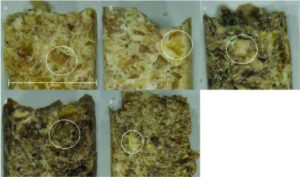Animals / Dairy Nutrition

Physical and chemical changes during storage of feed ingredients
During the storage of feed ingredients, various physical and chemical changes can occur, which may affect the quality, nutritional value, and shelf life of the feed. These changes can result from factors such as moisture content, temperature, oxygen exposure, microbial
Thank you for reading. Don't forget to subscribe & share!
Calculating Mineral Balance in Animals and Quantity to be Fed to meet Requirement
Calculating Mineral Balance in Animals and Quantity to be Fed to meet RequirementThank you for reading. Don’t forget to subscribe & share! A farmer fed 20ppm mineral in diet 5ppm appears in the feces, what would be the mineral balance
Toxic substances in poultry feed
1. Mycotoxins:Thank you for reading. Don’t forget to subscribe & share! Mycotoxins are toxic secondary metabolites produced by molds (fungi) that grow on feed ingredients before or after harvest. Common mycotoxins include aflatoxins, ochratoxins, fumonisins, deoxynivalenol (DON), zearalenone, and ergot
Quality control in lab analysis of feed
Quality control in laboratory analysis of feed is essential to ensure the accuracy, reliability, and consistency of test results, which are critical for assessing feed quality, nutritional composition, and safety. Here are key components of quality control in lab analysis
Animal and plant protein meals standards
Standards for animal and plant protein meals, also known as feed ingredients or feedstuffs, are established guidelines and specifications used in the feed industry to assess the quality, nutritional value, and safety of these products. These standards help ensure consistency,
Grain receiving standards
Grain receiving standards are established guidelines and specifications used by grain elevators, processors, and traders to assess the quality and condition of incoming grain shipments. These standards help ensure consistency, quality control, and fair trading practices in the grain industry.



